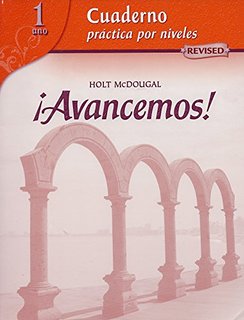
All Solutions
Page 100: Vocabulario B
The purpose of this exercise is to practise Spanish vocabulary.
There are five incomplete sentences about nutritious foods. Read all sentences carefully and decide which option fits best in the context. You may refer to the below solutions for further guidance.
2. jugo
3. compartir
4. el desayuno
5. yogur
The objective of this exercise is to practise using Spanish vocabulary.
In this exercise, you are given a text with blanks. The missing words are in the box above the text. You will read the text twice to understand it and then go ahead and complete the text. Below, you will find an analysis to help you solve the task.
In the first sentence, Gustavo says that he likes to “comer _ en el desayuno”. For the first blank, you would be looking for an edible noun, to put it that way. From the seven options, only “cereal” fits into the context.
He continues saying that “cuando _”, he prefers to drink “_ de naranja”. “When” is usually followed by a verb, which points at two options: “tengo ganas de” or “tengo sed”. Logically, he would be talking about being thirsty, which in Spanish you express with the verb “tener”: “tengo sed”. The latter refers to a drinkable noun, and “jugo” is the only such noun left.
2. leche
3. horrible
4. tengo sed
5. jugo
6. nutritivas
7. tengo ganas de
The objective of this exercise is to practise writing in Spanish.
There are two personal questions in this exercise. Read them and respond according to your preferences. Given the personal nature of this task, only refer to the below example as a reference of how your resonses should look like.
1.A. Sí, me gusta comer en el desayuno.
1.B. No, no me gusta comer en el desayuno.
2.A. Me gusta más comer el desayuno porque tengo hambre en la mañana.
2.B. Me gusta más comer el almuerzo porque es más rico.

